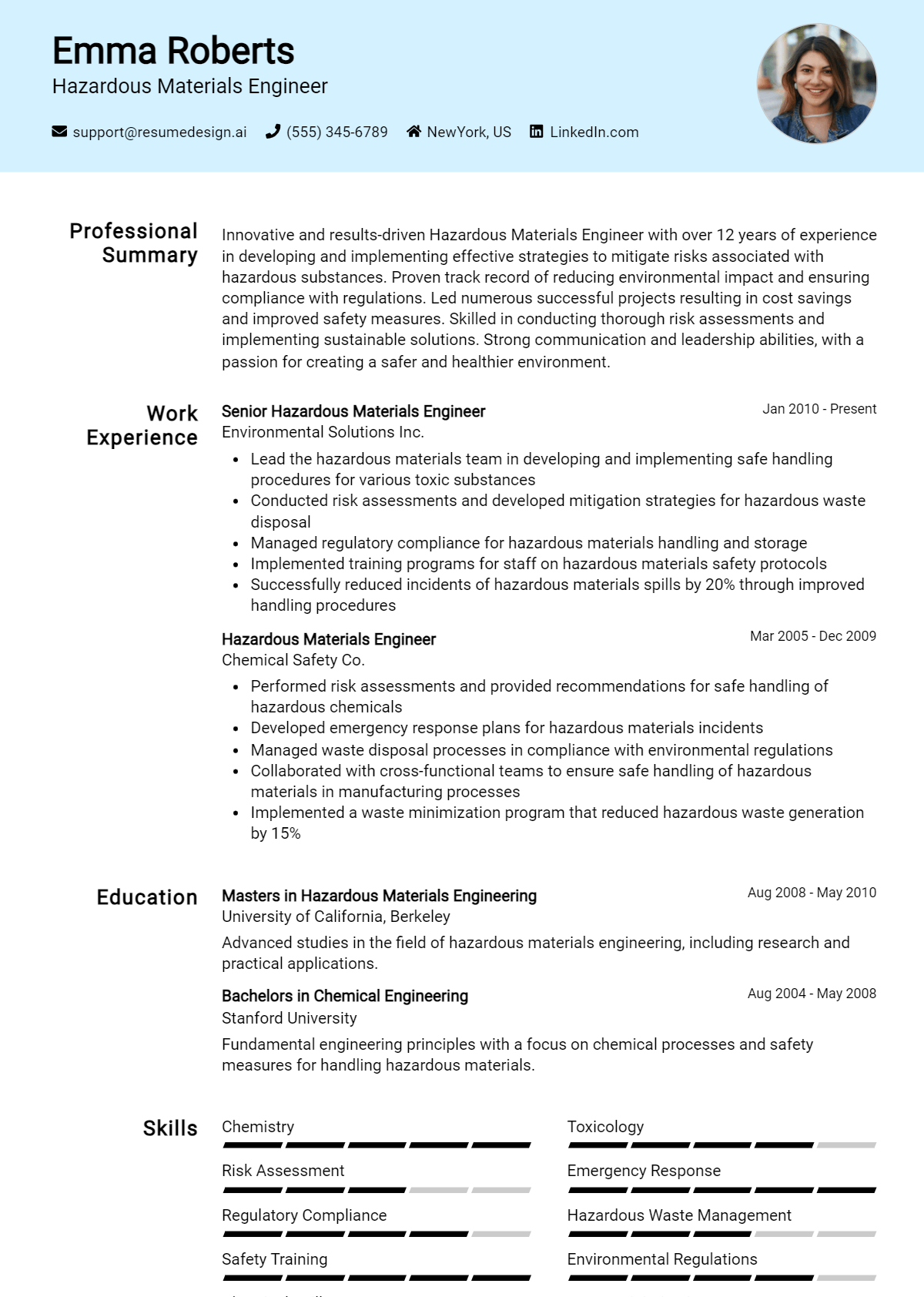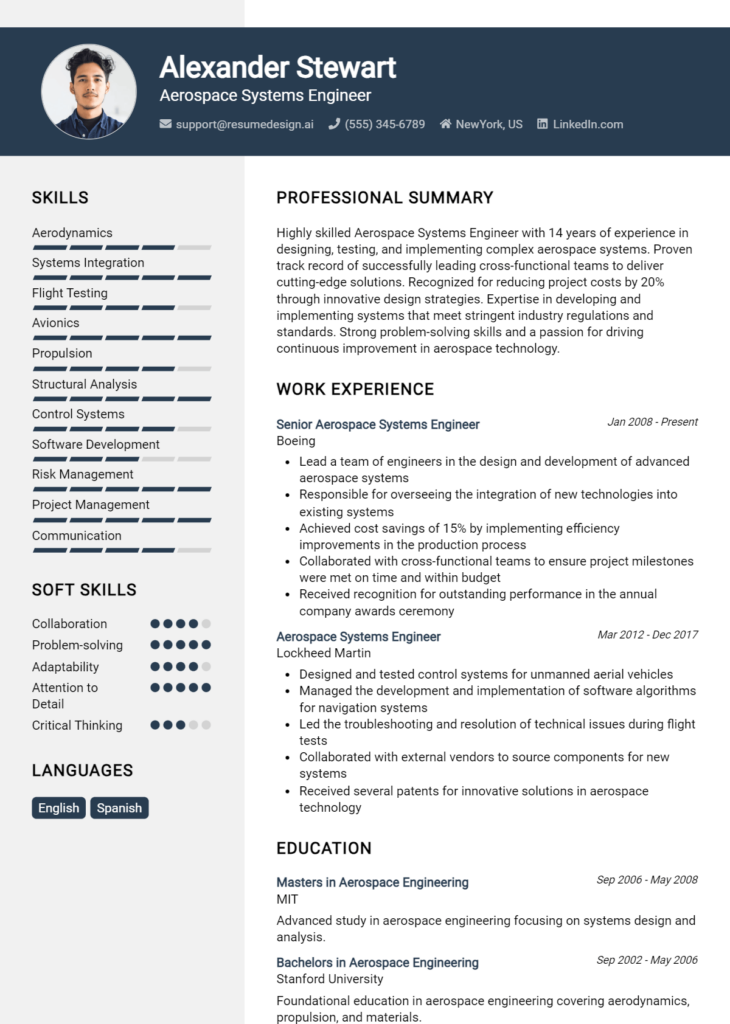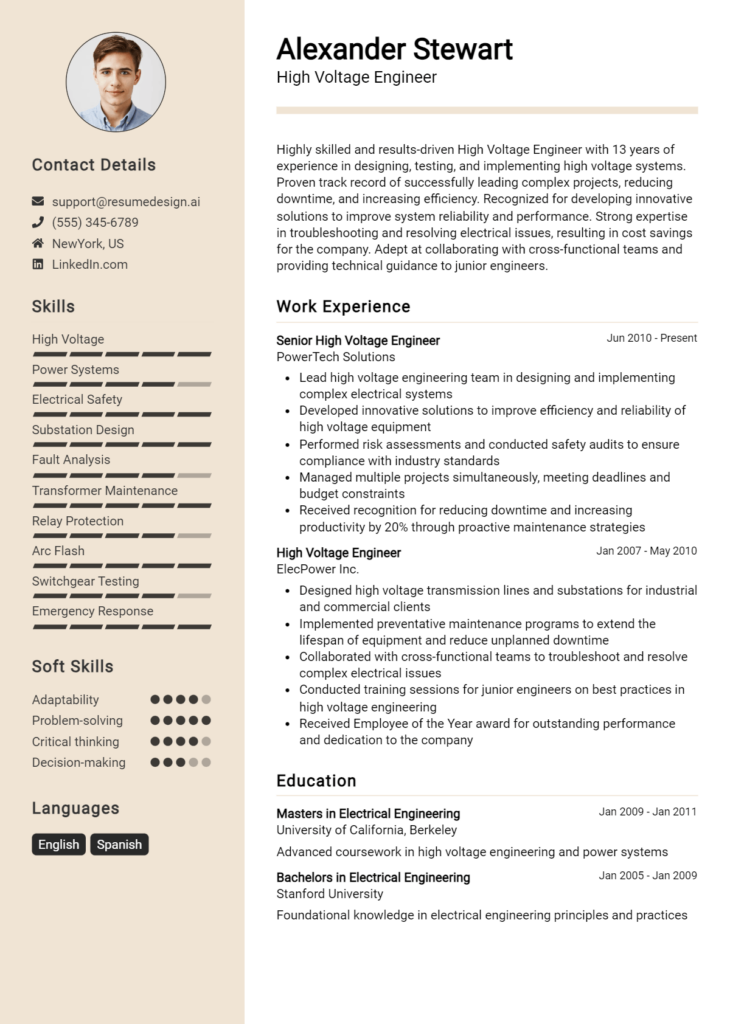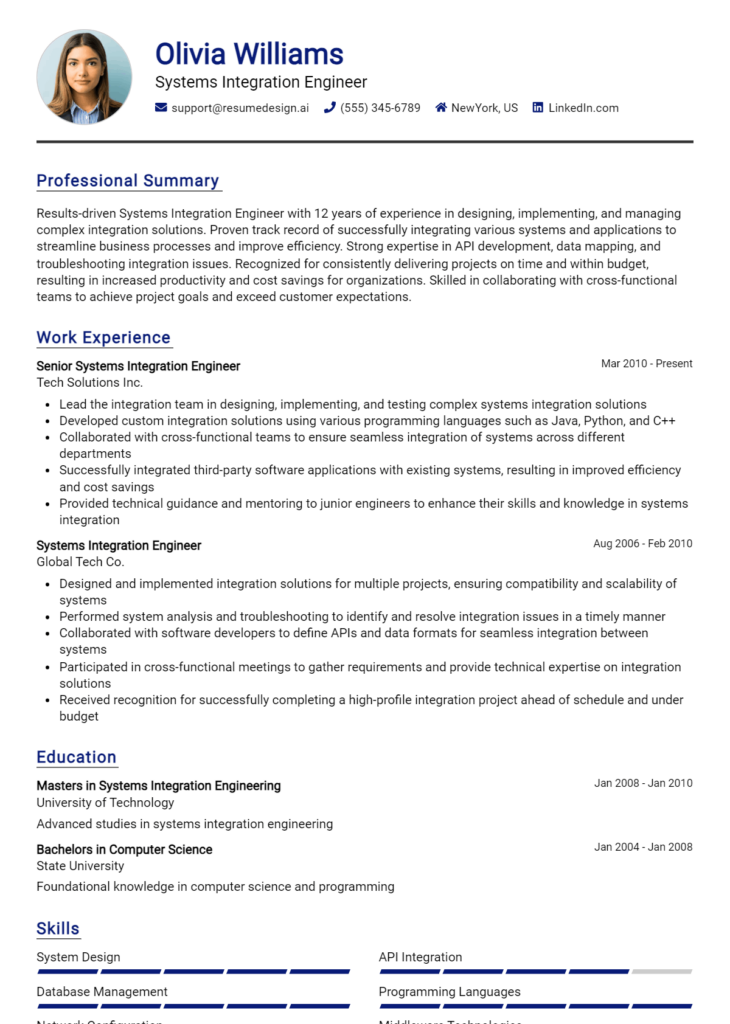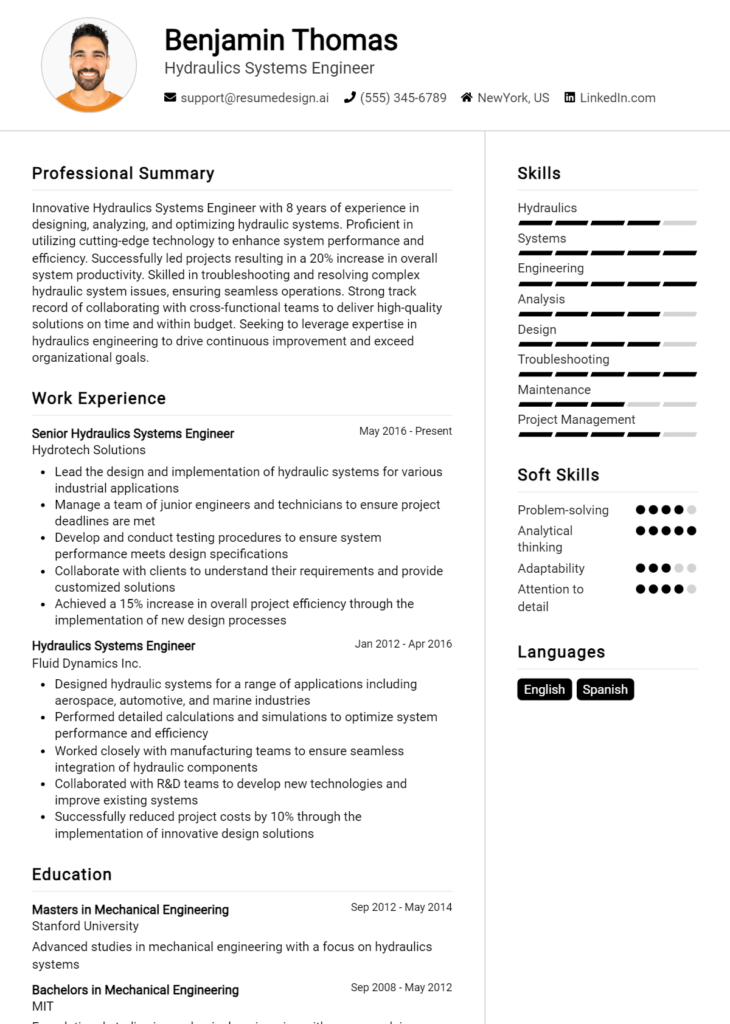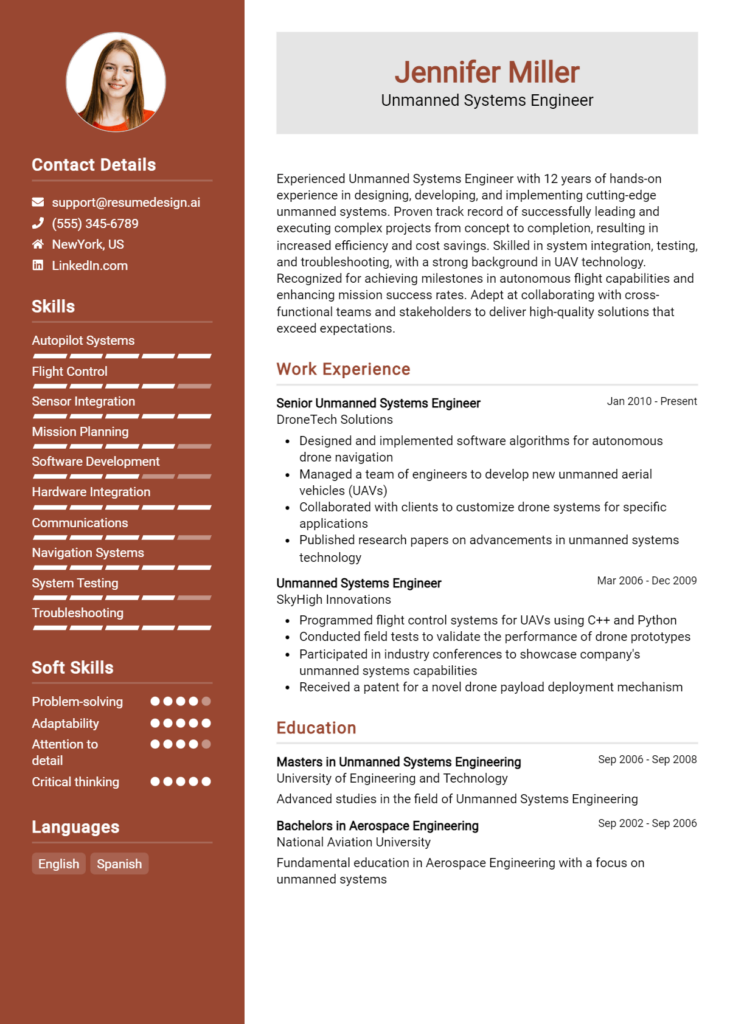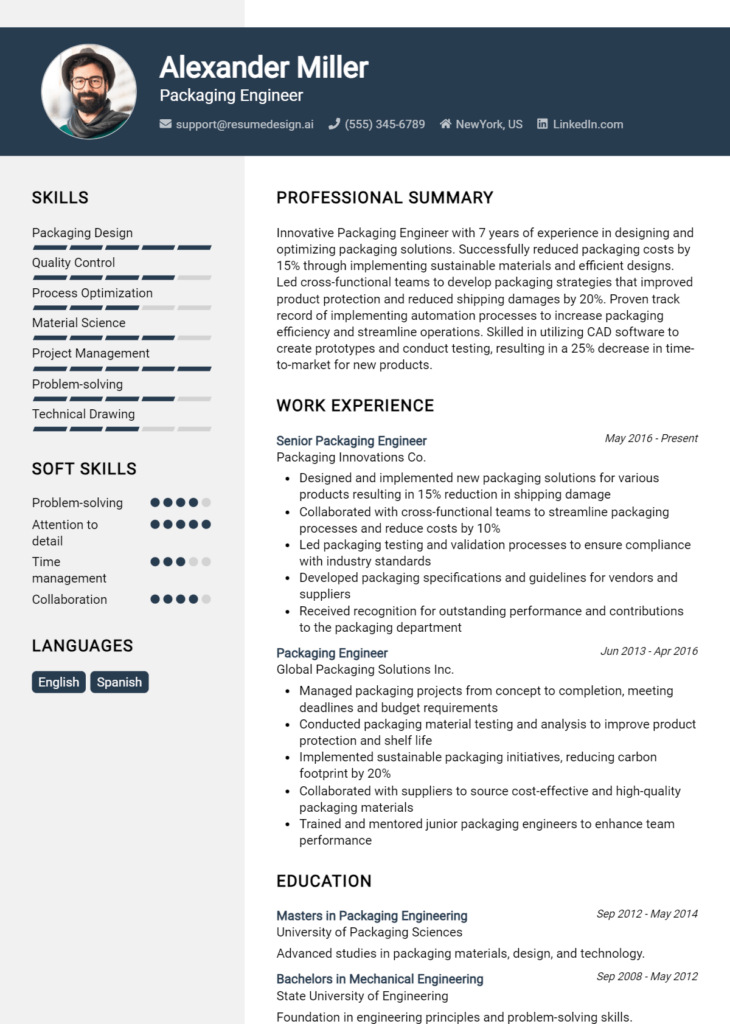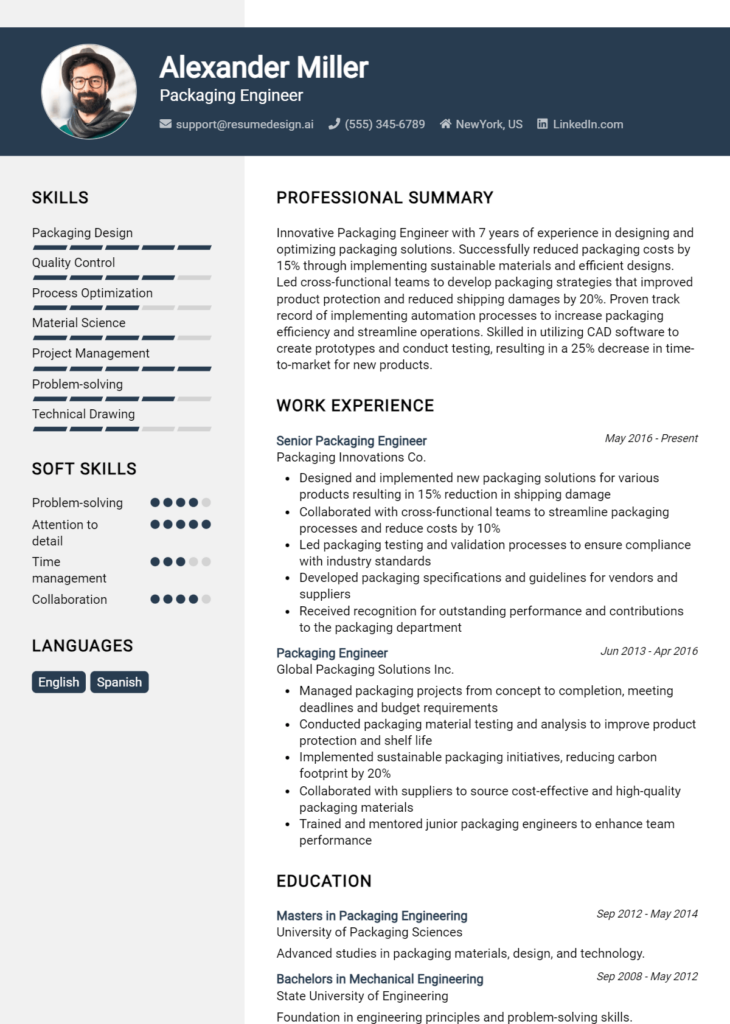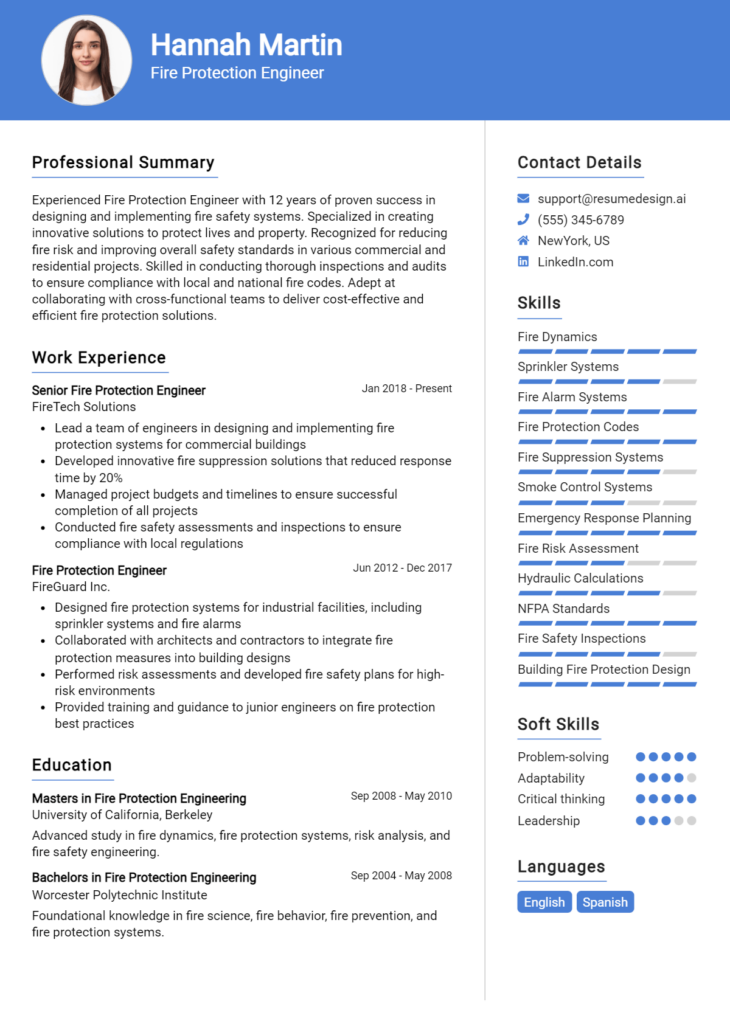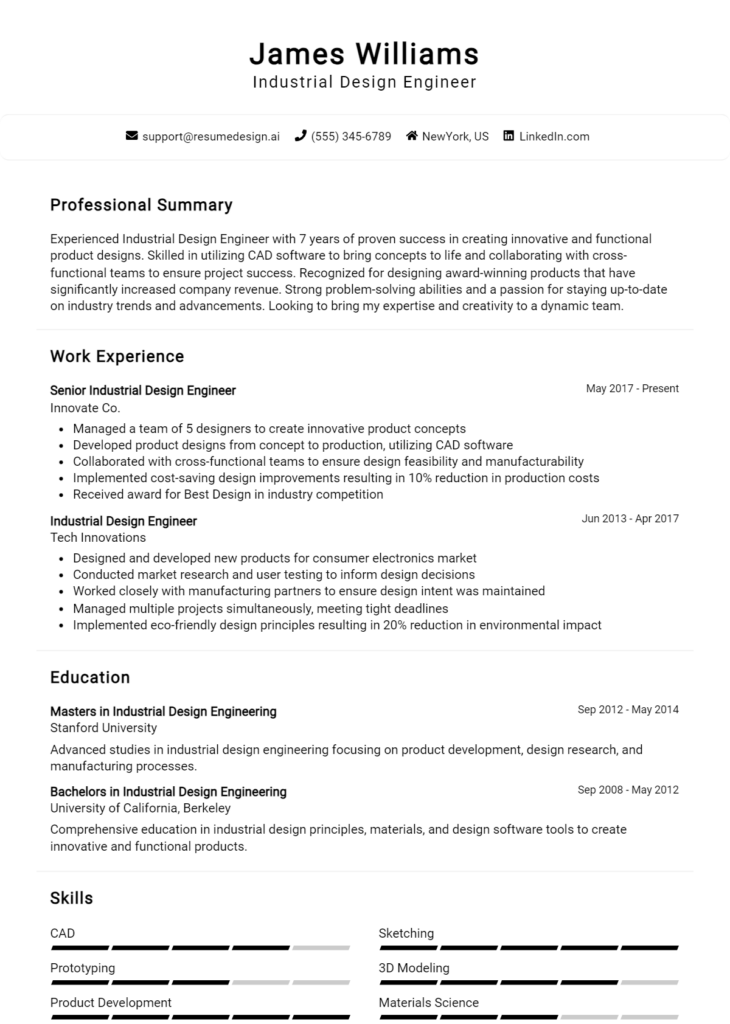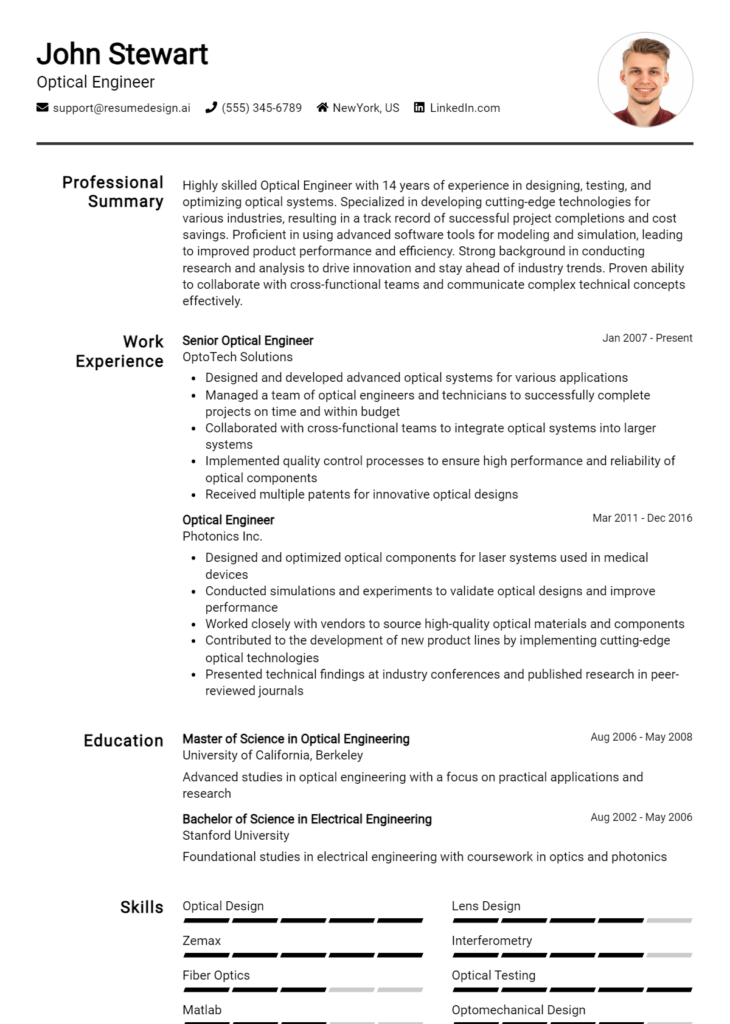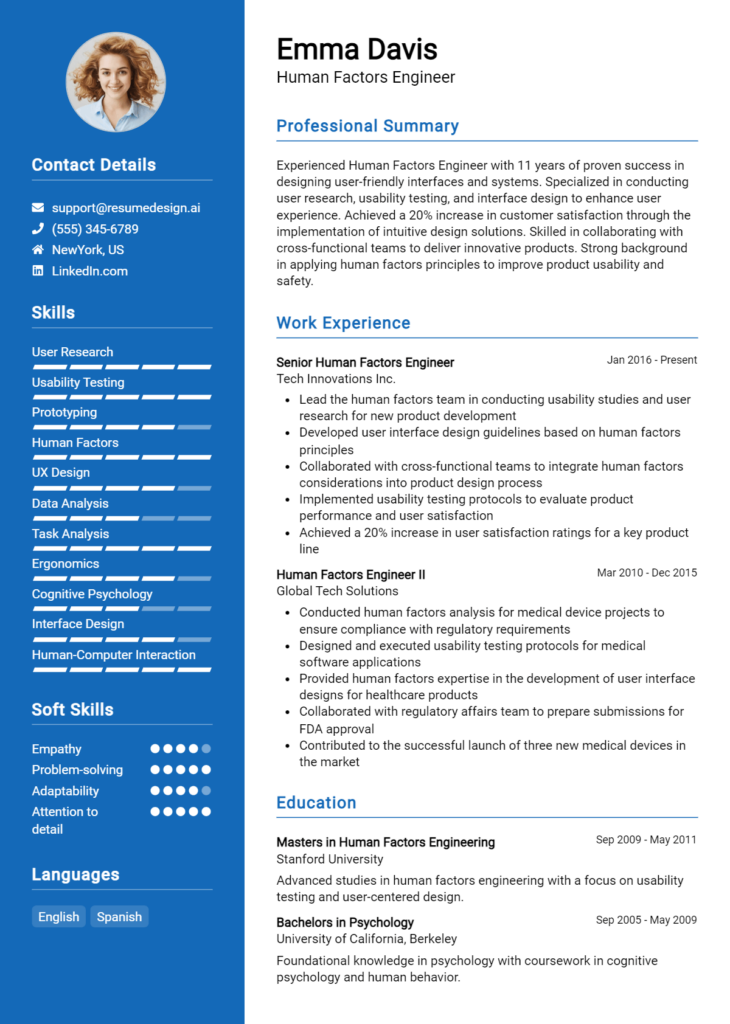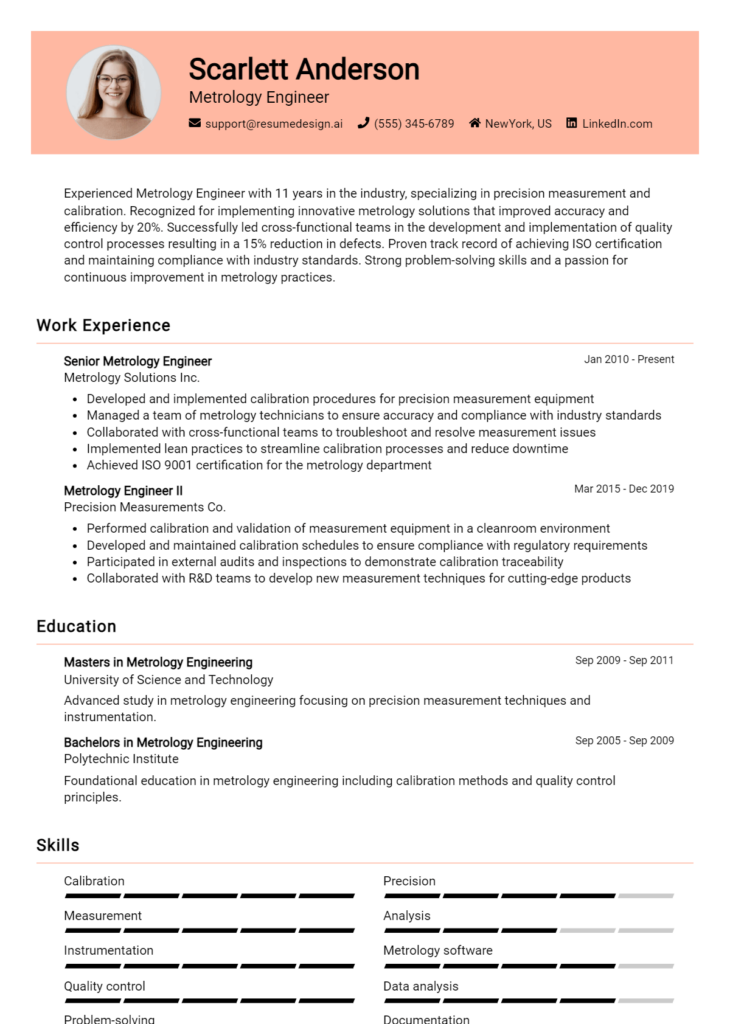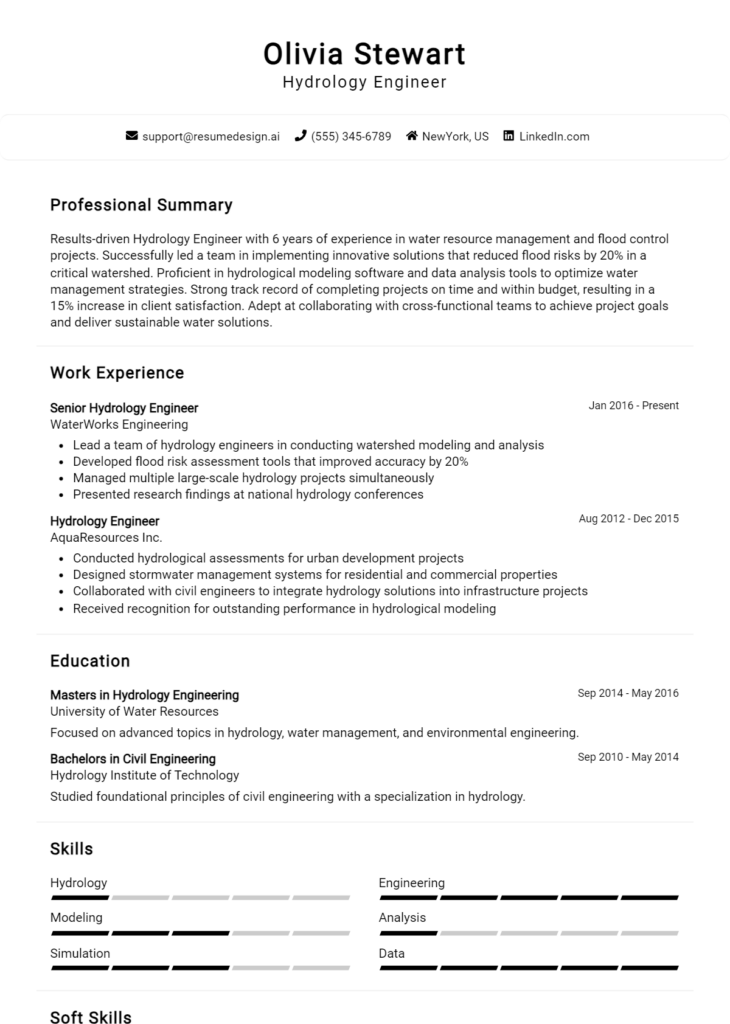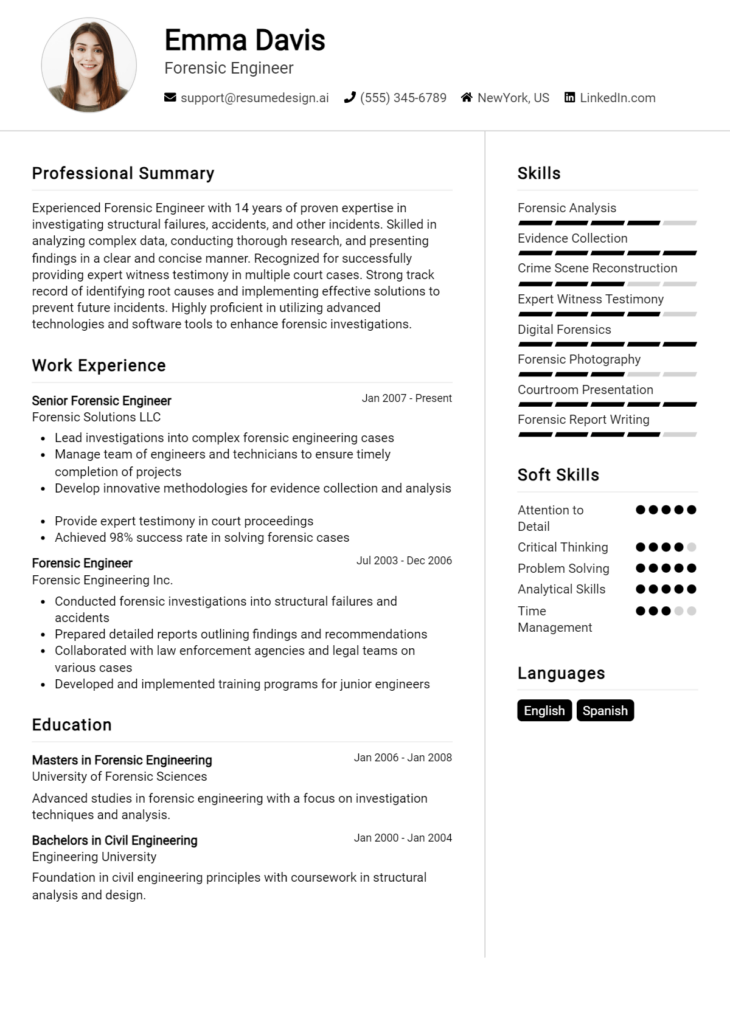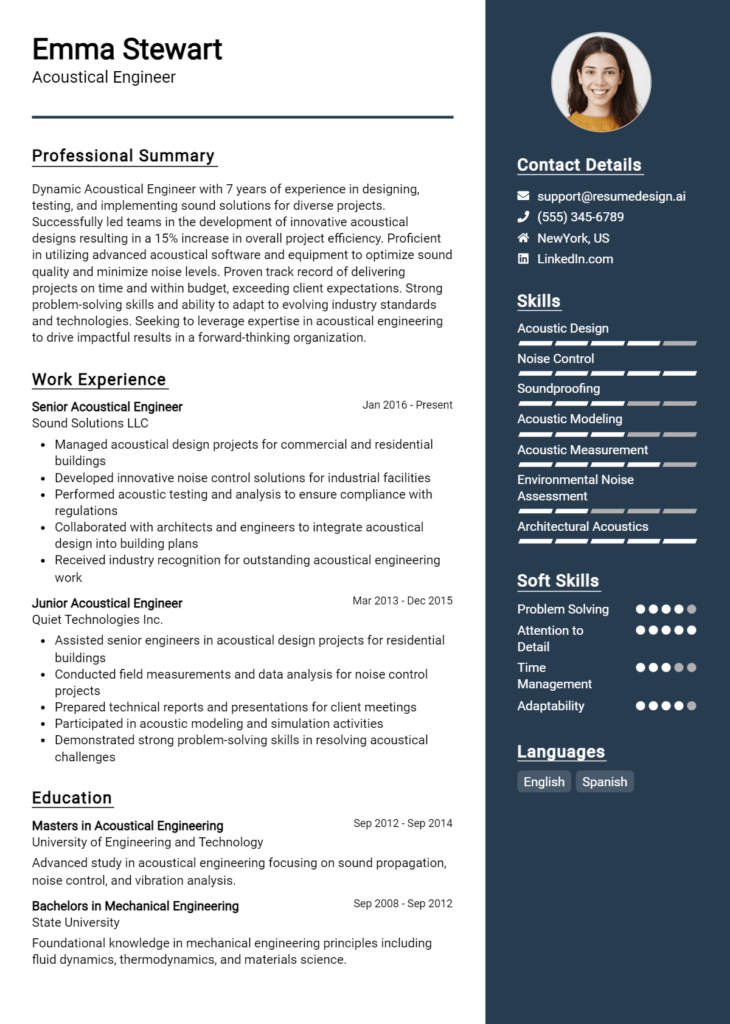Hazardous Materials Engineer Core Responsibilities
A Hazardous Materials Engineer is vital in ensuring safety and compliance in handling hazardous substances. Key responsibilities include assessing risks, developing safety protocols, and collaborating with environmental, safety, and engineering teams. This role demands strong technical expertise, operational efficiency, and exceptional problem-solving skills to navigate complex regulations and mitigate potential hazards. By effectively showcasing these qualifications on a well-structured resume, candidates can highlight their contributions to the organization's safety and sustainability goals.
Common Responsibilities Listed on Hazardous Materials Engineer Resume
- Conduct risk assessments and hazard analyses for chemical processes.
- Develop and implement safety protocols for hazardous material handling.
- Ensure compliance with environmental regulations and safety standards.
- Collaborate with cross-functional teams to address safety concerns.
- Design and oversee hazardous waste management systems.
- Conduct training sessions on hazardous materials safety for employees.
- Perform audits and inspections to ensure regulatory compliance.
- Investigate accidents and incidents involving hazardous materials.
- Prepare detailed reports and documentation for regulatory agencies.
- Advise on the selection and use of personal protective equipment (PPE).
- Stay updated on industry regulations and emerging technologies.
- Develop emergency response plans for hazardous material incidents.
High-Level Resume Tips for Hazardous Materials Engineer Professionals
In the competitive field of hazardous materials engineering, a well-crafted resume is crucial for making a positive first impression on potential employers. Your resume serves as a marketing tool that showcases your skills, experience, and achievements, all of which are vital for standing out in a pool of candidates. Given the specialized nature of this profession, it's essential that your resume not only reflects your technical expertise but also demonstrates your ability to effectively manage hazardous materials and ensure safety compliance. This guide will provide practical and actionable resume tips specifically tailored for hazardous materials engineer professionals, helping you to create a compelling representation of your qualifications.
Top Resume Tips for Hazardous Materials Engineer Professionals
- Tailor your resume to the job description by using keywords and phrases mentioned in the posting.
- Showcase relevant experience by including specific projects or roles related to hazardous materials management.
- Quantify your achievements with metrics, such as the percentage reduction in hazardous waste or the number of successful compliance audits conducted.
- Highlight industry-specific skills, such as knowledge of regulatory standards, risk assessment methodologies, and safety protocols.
- Include certifications and licenses relevant to hazardous materials engineering, such as HAZWOPER or OSHA certifications.
- Utilize a clear and professional format, ensuring readability and easy navigation through sections like skills, experience, and education.
- Incorporate a strong summary statement that encapsulates your experience, skills, and career objectives in hazardous materials engineering.
- Focus on teamwork and collaboration, as many projects require working with multidisciplinary teams to manage hazardous materials safely.
- Keep your resume concise, ideally one page, while ensuring all critical information is included.
- Proofread for grammatical errors and typos, as attention to detail is paramount in this field.
By implementing these tips, you can significantly increase your chances of landing a job in the hazardous materials engineer field. A well-structured and targeted resume not only highlights your qualifications but also demonstrates your commitment to safety and compliance, making you a more attractive candidate to potential employers.
Why Resume Headlines & Titles are Important for Hazardous Materials Engineer
In the competitive field of hazardous materials engineering, a well-crafted resume headline or title is crucial for standing out to hiring managers. A strong headline serves as an immediate hook, summarizing a candidate's key qualifications and expertise in a concise and impactful phrase. It ensures that the most relevant skills and experiences are front and center, allowing employers to quickly assess a candidate's fit for the role. By being both concise and relevant, a compelling headline not only grabs attention but also sets the tone for the rest of the resume, making it an indispensable component of a successful job application.
Best Practices for Crafting Resume Headlines for Hazardous Materials Engineer
- Be concise: Aim for a headline that is no longer than one or two lines.
- Use specific terminology: Incorporate industry-related keywords to highlight expertise.
- Highlight key qualifications: Focus on what sets you apart, such as certifications or years of experience.
- Tailor to the job description: Align your headline with the requirements listed in the job posting.
- Showcase accomplishments: If possible, quantify achievements to demonstrate impact.
- Maintain professionalism: Use formal language that reflects your expertise in the field.
- Avoid clichés: Steer clear of overused phrases that lack originality.
- Keep it relevant: Ensure that the headline speaks directly to the role of a hazardous materials engineer.
Example Resume Headlines for Hazardous Materials Engineer
Strong Resume Headlines
Certified Hazardous Materials Engineer with 10+ Years of Experience in Environmental Compliance
Innovative Hazardous Waste Management Specialist Focused on Safety and Sustainability
Results-Driven Chemical Safety Engineer with Proven Success in Risk Assessment and Mitigation
Weak Resume Headlines
Engineer Looking for Opportunities
Experienced Professional in Hazardous Materials
The strong headlines are effective because they immediately convey the candidate's qualifications, experience, and focus areas, making it clear why they are a suitable fit for the job. They use specific language that resonates with hiring managers and highlights relevant skills. Conversely, the weak headlines fail to impress due to their vagueness and lack of specificity. They do not provide any insight into the candidate's unique strengths or how they align with the role, making it difficult for employers to see the value they could bring to the position.
Writing an Exceptional Hazardous Materials Engineer Resume Summary
A resume summary is a crucial element for a Hazardous Materials Engineer as it serves as the first impression for hiring managers, effectively encapsulating the candidate's key skills, experience, and accomplishments in a concise manner. A strong summary quickly captures attention, providing a snapshot of the candidate's qualifications and how they align with the specific job requirements. By presenting relevant expertise in hazardous materials management, regulatory compliance, and safety protocols, a well-crafted summary can set the tone for the rest of the resume, making it essential for candidates to ensure it is both impactful and tailored to the job they are applying for.
Best Practices for Writing a Hazardous Materials Engineer Resume Summary
- Quantify achievements to demonstrate impact (e.g., reduced waste by 30%).
- Focus on relevant skills such as chemical analysis, risk assessment, and regulatory knowledge.
- Tailor the summary to match the job description, using keywords from the posting.
- Keep it concise, generally 3-5 sentences long.
- Highlight certifications or specialized training in hazardous materials management.
- Use active language to convey confidence and proactivity.
- Showcase your ability to work in interdisciplinary teams and communicate effectively.
- Include any leadership roles or initiatives that highlight your capability to drive safety improvements.
Example Hazardous Materials Engineer Resume Summaries
Strong Resume Summaries
Results-driven Hazardous Materials Engineer with over 8 years of experience in chemical safety and compliance, successfully leading a team to reduce hazardous waste by 30% through innovative recycling initiatives. Proven track record in conducting thorough risk assessments and implementing safety protocols that comply with federal regulations.
Dedicated Hazardous Materials Engineer with expertise in environmental regulations and hazardous waste management. Spearheaded a project that resulted in a 25% reduction in spill incidents, enhancing workplace safety and saving the company $200,000 annually. Certified in HAZWOPER and ISO 14001.
Detail-oriented Hazardous Materials Engineer with a strong foundation in material safety data sheet (MSDS) compliance and training. Developed a comprehensive training program for employees that improved safety compliance rates by 40%, contributing to a safer working environment and minimizing liability.
Weak Resume Summaries
Experienced engineer looking for a position in hazardous materials management. I have a background in safety and compliance.
Hazardous Materials Engineer with some experience in the field. I am seeking a challenging role where I can apply my skills.
The strong resume summaries stand out because they are specific, quantifiable, and relevant to the role of a Hazardous Materials Engineer. They include measurable outcomes that showcase the candidate's impact, as well as relevant skills and certifications that align with the job description. In contrast, the weak summaries lack detail and fail to convey the candidate's unique value, making them appear generic and uninspiring. These weak examples do not highlight any significant achievements or qualifications, diminishing their potential to attract hiring managers' attention.
Work Experience Section for Hazardous Materials Engineer Resume
The work experience section of a Hazardous Materials Engineer resume is crucial as it provides a platform to demonstrate the candidate's technical skills, ability to manage teams, and deliver high-quality products. This section allows candidates to showcase their expertise in handling hazardous materials, ensuring compliance with safety regulations, and implementing effective waste management strategies. Moreover, quantifying achievements and aligning experiences with industry standards are essential for making a compelling case to potential employers, highlighting the candidate's capability to contribute positively to their organization.
Best Practices for Hazardous Materials Engineer Work Experience
- Use clear and specific language to describe technical skills relevant to hazardous materials management.
- Quantify achievements with metrics, such as percentage reductions in waste or cost savings.
- Highlight leadership roles in team projects, emphasizing collaboration and communication skills.
- Include certifications and training that enhance technical expertise and safety knowledge.
- Align descriptions with industry standards and terminology to demonstrate familiarity with best practices.
- Showcase problem-solving abilities through examples of overcoming challenges in hazardous materials handling.
- Detail experience with regulatory compliance, emphasizing successful audits or inspections.
- Incorporate specific software or technologies used in hazardous materials analysis and management.
Example Work Experiences for Hazardous Materials Engineer
Strong Experiences
- Led a team of 10 engineers in a project to redesign chemical storage facilities, achieving a 30% increase in compliance with OSHA standards and reducing incident reports by 15%.
- Managed hazardous waste disposal processes that resulted in a 25% reduction in overall disposal costs while ensuring full regulatory compliance.
- Developed and implemented a new training program for staff on hazardous material handling, improving safety performance metrics by 40% within one year.
- Collaborated with cross-functional teams to perform risk assessments and implement safety measures, significantly decreasing potential exposure incidents by 20%.
Weak Experiences
- Assisted in various projects related to hazardous materials without specifying contributions or outcomes.
- Involved in safety audits but failed to mention any positive results or improvements made.
- Worked on chemical storage tasks without detailing specific responsibilities or achievements.
- Participated in team meetings focused on hazardous materials, but did not contribute to actionable plans or initiatives.
The examples of strong experiences are considered effective because they provide concrete metrics and demonstrate significant contributions to safety and compliance outcomes. Each bullet highlights leadership, collaboration, and quantifiable results, painting a clear picture of the candidate’s capabilities. In contrast, the weak experiences lack specificity and measurable achievements, making them less impactful. They do not convey the candidate's expertise or the value they can bring to an employer, which is critical in the competitive field of hazardous materials engineering.
Education and Certifications Section for Hazardous Materials Engineer Resume
The education and certifications section of a Hazardous Materials Engineer resume is crucial as it showcases the candidate's academic background and specialized qualifications relevant to the field. This section not only highlights formal degrees but also emphasizes industry-relevant certifications and ongoing professional development, which are essential in demonstrating a commitment to safety and regulatory compliance. By providing details on relevant coursework, certifications, and any specialized training, candidates can significantly enhance their credibility and demonstrate alignment with the specific requirements of the job role.
Best Practices for Hazardous Materials Engineer Education and Certifications
- Include only degrees and certifications that are relevant to hazardous materials engineering.
- List your highest degree first, including the institution and graduation date.
- Highlight industry-recognized certifications such as Certified Hazardous Materials Manager (CHMM) or Hazardous Materials Technician (HMT).
- Include relevant coursework that directly pertains to hazardous materials management, safety protocols, and environmental regulations.
- Maintain a clear and organized format to enhance readability.
- Update this section regularly to include new certifications or completed training programs.
- Consider adding any specialized training related to emergency response or risk assessment.
- Use action verbs to describe your educational accomplishments, such as "Completed," "Achieved," or "Earned."
Example Education and Certifications for Hazardous Materials Engineer
Strong Examples
- Bachelor of Science in Environmental Engineering, University of California, Berkeley, 2020
- Certified Hazardous Materials Manager (CHMM), 2021
- OSHA 40-Hour HAZWOPER Training, 2022
- Master's Certificate in Hazardous Materials Management, National Fire Academy, 2023
Weak Examples
- Bachelor of Arts in English Literature, University of Texas, 2018
- Certification in Basic First Aid, American Red Cross, 2019
- Coursework in Creative Writing, Online Community College, 2021
- High School Diploma, Lincoln High School, 2016
The strong examples are considered effective as they directly align with the requirements of a Hazardous Materials Engineer, showcasing relevant degrees and certifications that enhance the candidate's qualifications in the field. In contrast, the weak examples lack relevance; degrees and certifications that do not pertain to hazardous materials engineering fail to demonstrate the necessary expertise and commitment to the profession. This distinction is vital for potential employers who seek candidates with specific knowledge and skills in hazardous materials management.
Top Skills & Keywords for Hazardous Materials Engineer Resume
In the field of hazardous materials engineering, possessing the right skills is paramount to ensuring safety, compliance, and efficiency in handling potentially dangerous substances. A well-crafted resume that highlights both hard and soft skills can significantly enhance a candidate's prospects in a competitive job market. Employers seek individuals who not only have the technical know-how but also the interpersonal abilities to work effectively in teams, communicate risks clearly, and navigate regulatory frameworks. Therefore, understanding and effectively showcasing these skills can be the key to landing a coveted position in this vital field.
Top Hard & Soft Skills for Hazardous Materials Engineer
Soft Skills
- Problem-solving
- Attention to detail
- Communication skills
- Team collaboration
- Critical thinking
- Time management
- Adaptability
- Leadership qualities
- Ethics and integrity
- Conflict resolution
Hard Skills
- Hazardous materials management
- Regulatory compliance knowledge (OSHA, EPA)
- Risk assessment and mitigation
- Environmental impact analysis
- Material safety data sheet (MSDS) interpretation
- Waste disposal techniques
- Emergency response planning
- Analytical laboratory skills
- Chemical handling and storage
- Equipment operation and maintenance
By focusing on these skills, candidates can effectively demonstrate their qualifications and readiness to tackle the challenges associated with hazardous materials engineering. Additionally, showcasing relevant work experience can further solidify a candidate’s position as a top contender in this essential field.
Stand Out with a Winning Hazardous Materials Engineer Cover Letter
As a highly skilled Hazardous Materials Engineer with over five years of experience in environmental engineering and safety compliance, I am excited to apply for the position at [Company Name] as advertised. My extensive background in managing hazardous materials and ensuring adherence to safety regulations aligns perfectly with your organization’s commitment to excellence and innovation in environmental safety. I am confident that my technical expertise and proactive approach to risk management will make a valuable addition to your team.
Throughout my career, I have successfully overseen the assessment, handling, and disposal of hazardous materials for various projects, ensuring that all activities comply with local, state, and federal regulations. My role at [Previous Company Name] involved conducting thorough risk assessments, developing safety protocols, and providing training to staff on hazardous waste management. I led a project that resulted in a 30% reduction in hazardous waste generation through process optimization and material substitution, demonstrating my ability to devise effective solutions while maintaining safety and compliance.
In addition to my technical skills, I possess strong communication and collaboration abilities that allow me to work effectively with cross-functional teams. I have a proven track record of engaging with regulatory agencies and stakeholders to facilitate compliance audits and inspections, fostering a culture of safety and accountability. My commitment to continuous improvement motivates me to stay updated on industry trends and advancements, which I believe would greatly benefit [Company Name] in its mission to enhance safety and sustainability practices.
I am eager to bring my expertise in hazardous materials management to [Company Name] and contribute to your ongoing efforts to create a safer and more sustainable environment. I look forward to the opportunity to discuss how my skills and experiences align with the goals of your team. Thank you for considering my application.
Common Mistakes to Avoid in a Hazardous Materials Engineer Resume
Crafting a compelling resume as a Hazardous Materials Engineer requires attention to detail and a clear understanding of the role's specific demands. Common mistakes can hinder your chances of securing an interview and may lead hiring managers to overlook your qualifications. Here are some frequent pitfalls to avoid when creating your resume:
Vague Job Descriptions: Failing to provide specific details about your previous roles can make it difficult for employers to gauge your experience. Use clear, quantifiable achievements instead of generic statements.
Ignoring Relevant Certifications: Hazardous Materials Engineers are often required to hold specific certifications (like HAZWOPER). Omitting these from your resume can signal a lack of qualifications to potential employers.
Overly Technical Language: While it's important to demonstrate your technical expertise, using excessive jargon can alienate hiring managers who may not be familiar with every term. Aim for clarity and simplicity.
Neglecting Soft Skills: Technical skills are essential, but soft skills such as teamwork, communication, and problem-solving are equally important. Failing to highlight these can give a one-dimensional view of your capabilities.
Poor Formatting: A cluttered or unorganized resume can distract from your qualifications. Use consistent formatting, clear headings, and bullet points to enhance readability.
Not Tailoring the Resume: Sending out a generic resume for all applications can be detrimental. Tailor your resume to each job listing, emphasizing the skills and experiences that align with the specific requirements.
Omitting Accomplishments: Rather than just listing duties, focus on your accomplishments and the impact of your work. Use metrics to showcase how you improved processes or ensured compliance.
Failure to Proofread: Spelling and grammatical errors can undermine your professionalism. Thoroughly proofread your resume, or consider having someone else review it to catch mistakes you might have missed.
Conclusion
As we conclude our overview of the Hazardous Materials Engineer role, it's clear that this position requires a unique blend of technical expertise, regulatory knowledge, and critical thinking skills. Throughout the article, we explored the essential responsibilities of a Hazardous Materials Engineer, including the assessment of hazardous materials, the development of safety protocols, and compliance with environmental regulations. We also highlighted the importance of effective communication and teamwork in ensuring safety and efficiency in the workplace.
In today's competitive job market, having a strong resume is vital to stand out. If you're looking to refine your application, now is the perfect time to review your Hazardous Materials Engineer resume. Take advantage of the various resources available to help you present your qualifications effectively. Explore resume templates to find a design that suits your style, utilize the resume builder for a step-by-step approach to crafting your document, and check out resume examples for inspiration. Additionally, don’t forget to polish your application with a compelling cover letter using our cover letter templates.
By leveraging these tools, you can ensure that your resume stands out to potential employers and reflects your qualifications as a Hazardous Materials Engineer. Take action today and enhance your career prospects!

